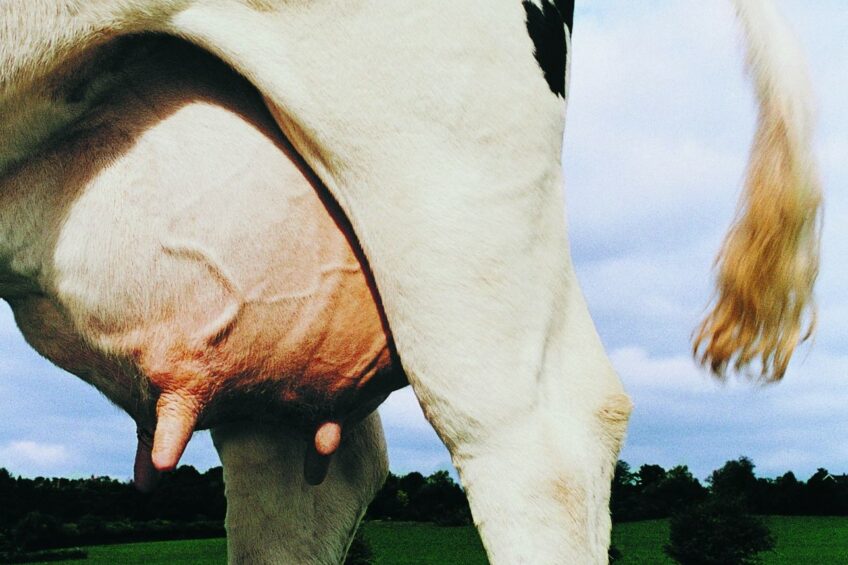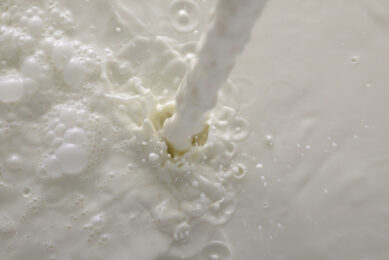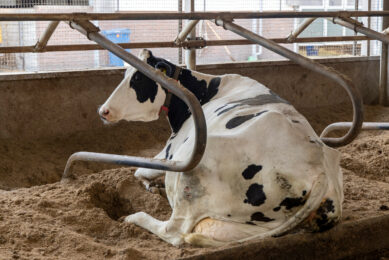Managing the risk of mastitis in wet weather

Muddy conditions from floods and the ongoing wet conditions in Australia created an increased risk of mastitis in their cows. What can farmers do to manage this risk?
Agriculture Victoria Dairy Industry Development Officer, Richard Smith, says that cows standing in wet paddocks and moving through muddy and damaged laneways have an increased risk of mastitis.
But there are a number of simple things farmers can do to manage the risk of mastitis developing in their cows, he says, “including maintaining good hand hygiene when milking and ensuring teats are clean before and after milking”.
According to Dairy Australia, the prevention of new clinical mastitis cases needs to be a major focus for dairy farmers. But it is inevitable that dairy farms will need to manage clinical cases well when they do present, Dairy Australia says, adding, “Optimising the management of a cow with clinical mastitis is crucial for the cow’s welfare, for ongoing milk production and to limit the costs associated with treatment. Unfortunately, the treatment of clinical mastitis can provide dairy farmers with challenges as it interrupts the smooth running of the milking and herd, can lead to excessive costs and be frustrating when the treatment is not successful.”
Cost of clinical mastitis
Analysis conducted as part of a program of Dairy Australia has estimated the cost of a case of clinical mastitis at AUS $ 277 (US$ 193), although the precise cost will differ from farm to farm and with individual cases over time. The risk and potential penalty of antibiotic residues also provides motivation to review and improve processes with the treatment of clinical mastitis.
Richard Smith says adopting a number of simple practices will assist farmers in managing the risk of mastitis developing and spreading in the wet weather conditions. It is important to wash and dry all teats before cups go on, and to use a low-pressure, high-volume water supply combined with manual cleaning.
Smith says famers have to ensure milkers wear gloves and dry teats with paper towels. Cows have to be stripped every day to detect, treat and isolate clinical cases. Smith advises farmers to make daily quarter stripping a routine, to always wear gloves, and avoid getting milk on their hands.
Stripping – the action of hand stripping the first 3-5 streams of milk prior to milking unit attachment – is already a recommended and important step for most milking routines. It helps to detect milk abnormalities, which is useful to discover early stages of clinical mastitis.
Feed availability
Smith also advises farmers to check clinical cases at the next milking, and to cover all surfaces of all 4 teats with teat disinfectant. “Healthier skin is easier to keep clean. Try and keep teats clean for at least an hour after the cows leave the milking shed. Keep the area immediately outside the dairy exit as clean as possible.”
Farmers should have feed available when cows leave the shed, and to talk about all these steps, Smits says. “This could be on a feed pad. Ensure this area can be scraped to reduce mud and manure build up.” He says farmers should talk to the milk quality adviser, veterinarian or dairy factory field officer to adapt these steps to their farm situation.
A recent study on clinical mastitis and associated milk loss at the National Dairy Farm in the Emirate of Abu Dhabi (United Arab Emirates) found that weather conditions such as increased rainfall and humidity, which caused an upsurge in the incidence rate of clinical mastitis, led to an increased loss in milk and hence the economy of the dairy farm. Proactive preventive measures along with good dairy farm practices that help mitigate the impacts of harsh weather conditions are recommended, the researchers say.
Keeping bedding clean and dry
Managing veterinarian of pharmaceutical company Zoetis, Juan Rodrigo, says it is important for farmers to provide clean, dry bedding. “While facility type can have a significant influence on how you protect against wet weather, keeping bedding clean and dry is a best practice because mastitis pathogens can thrive in wet bedding.”
He suggests increasing the number of times that farmers add new bedding during rainy seasons in order to keep it dry. If farmers are concerned about having enough additional bedding materials, they should consider reducing the amount of material they put on at each opportunity. “For example, if you normally put 4 inches of sand on a bed once a week, consider putting 1 inch of sand on every other day. This will allow you to maintain the dryness of the bed with the same amount of material.”
Rodrigo says that it also can be helpful for farmers to test their waste management. “Wet weather can really be a litmus test for how good your waste management is. It is important to make sure alleyways are clean so cows are not dragging manure back into stalls. This will also help keep their feet clean and prevent contaminating the udder.”
Cleaning the back of the stall is a must, Rodrigo emphasises: “Someone must rake stalls when cows are away for milking and make sure the alley is clean. Additionally, if the cows are in dry lots, pay close attention to the areas under cover – animals may be congregating there and creating a very muddy area as well as increasing the risk of udder injuries due to crowding. Daily pen management is crucial to provide cow comfort and keep dry lots clean.”
Even in wet weather, it is advisable to watch out for heat stress. “Just because its wet weather, doesn’t mean it’s cold,” Rodrigo points out. “And heat and damp can be a perfect environment to breed increased infection risk. Heat stressed cows have depressed immunity. If the udder is exposed to bacteria due to muddy conditions, a heat-stressed cow may not be able to fight off the infection.”
He says that farmers should fine-tune their vaccination protocol. Coliform mastitis vaccinations can help reduce the effects of environmental mastitis. “While you may typically administer the vaccine during the dry period, it is worth revisiting your vaccination protocol with your veterinarian to account for increased pressure from environmental pathogens,” Rodrigo says.
Join 13,000+ subscribers
Subscribe to our newsletter to stay updated about all the need-to-know content in the dairy sector, two times a week.










